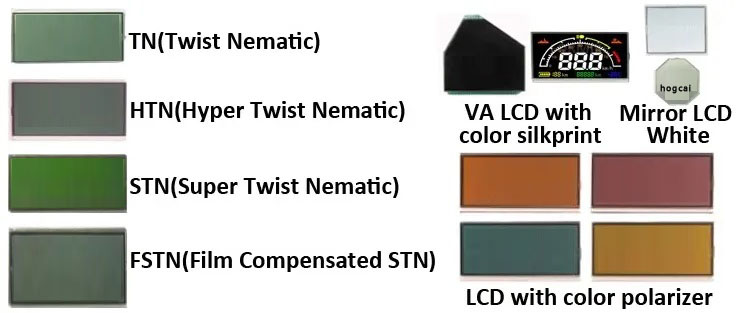STN is the earliest main display method, initially it can only display 256 colors, after technical transformation, it can display 4096 colors or even 65536 colors, but the current STN is still 256 colors, the advantages are: low price, low energy consumption.
TFT has good brightness, high contrast, strong layering and bright colors. The disadvantage is that it consumes more power and costs more.

TFT (Thin Film Transistor) is a thin film field effect transistor, which is a kind of active matrix liquid crystal display. It can “actively” control each individual pixel on the screen, which can greatly improve the reaction time. Generally, the response time of TFT is relatively fast, about 80 milliseconds, and the viewing angle is large, generally can reach about 130 degrees, and it is mainly used in high-end products. The so-called thin film field effect transistor means that each liquid crystal pixel on the liquid crystal display is driven by a thin film transistor integrated behind it. In this way, high-speed, high-brightness, and high-contrast display screen information can be achieved. TFT is an active matrix liquid crystal display, which is technically driven by the “active matrix” method. The method is to use the transistor electrode made of thin film technology, and use the scanning method to “actively pull” to control the opening of any display point. On and off, when the light source is irradiated, it first shines through the lower polarizer, and the light is transmitted by the liquid crystal molecules, and the purpose of display is achieved by shading and transmitting light.
The main components of a TFT liquid crystal display include: backlight, polarizer, thin-mode crystal glass substrate, flexible circuit board, and driver IC.
UFB is the abbreviation of Ultra Fine Bright. It is a dedicated color display technology for Samsung mobile phones. In terms of design, UFB adopts a special grating design, which can reduce the pixel pitch to obtain better image quality. Its characteristics are: ultra-thin, high brightness. It can display 65536 colors, and the resolution can reach 128×160 resolution. The UFB display adopts a special grating design, which can reduce the pixel pitch and obtain better picture quality. UFB combines the advantages of STN and TFT: less power consumption than TFT, and the price is similar to STN.
STN (Super Twisted Nematic) screen, also known as super twisted nematic LCD screen. A color filter is added to the traditional monochrome liquid crystal display, and each pixel in the monochrome display matrix is divided into three pixels, and the three primary colors of red, green and blue are displayed through the color filter, so as to achieve the display of color. Function, the color is mainly light green and orange. The STN screen is a reflective LCD, which has the advantage of low power consumption, but poor clarity in darker environments.
STN mainly includes CSTN and DSTN. CSTN, or ColorSTN, generally adopts transmissive lighting. The transmissive screen needs to be illuminated by an external light source, called backlight, and the lighting source should be installed behind the LCD. Transmissive LCD displays well in both normal light and dim light. STN is the abbreviation of Super Twisted Nematic.
TFD (Thin Film Diode) screen, also known as thin film diode transflective liquid crystal display. TFD technology was developed by Seiko and Epson for use on mobile phone screens. It is a compromise between TFT and STN. It has better brightness and color saturation than STN, and saves power than TFT. The biggest feature is that it can provide high-quality, easy-to-view display regardless of whether the backlight is turned off (reflective mode) or the backlight is turned on (transmissive mode), and it has the advantages of low power consumption, high image quality, and high response speed.
OLED (Organic Light Emitting Display) is an organic light-emitting display, which is a new type of product on mobile phone LCDs. OLED display technology is different from traditional LCD display methods. It does not require backlights. It uses very thin organic material coatings and glass substrates. These organic materials emit light when passed through. Moreover, the OLED display screen can be made lighter and thinner, has a wider viewing angle, and can significantly save power consumption.
However, although OLED with better technology may replace TFT LCD in the future, organic light-emitting display technology still has defects such as short service life and difficulty in large-scale screens.
From the display effect, it can be basically considered as amoled > Ltps > tft > tfd > ufb > stn